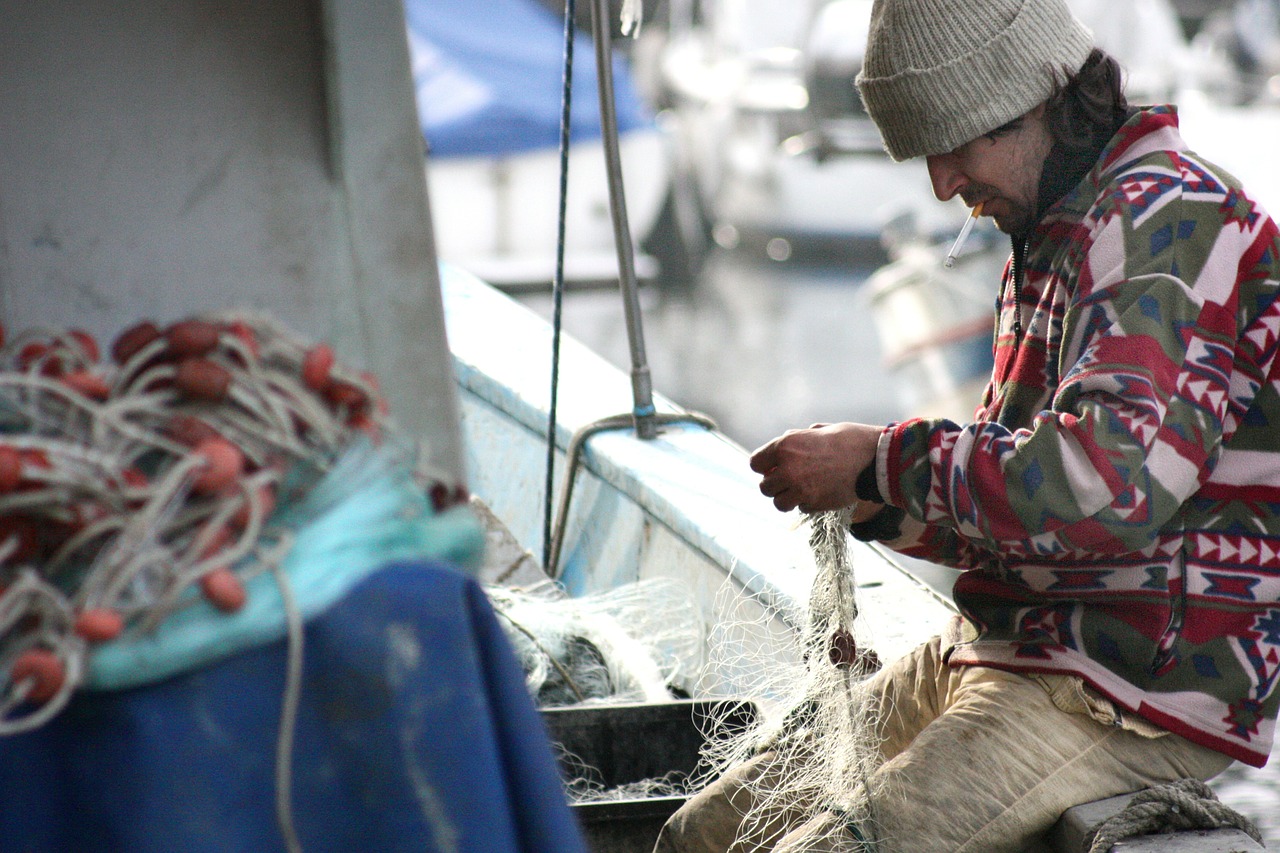
12 Overfishing Solutions That Could Save Our Oceans
We are reader-supported. When you buy through links on our site, we may earn affiliate commission.
Last Updated: March 27, 2024
Overfishing has become a global crisis. As of 2023, 58% of commercial fish are harvested beyond sustainable thresholds. Thankfully, this is a 31% reduction since 2012. Over time, this unsustainable fishing will both decrease the amount of wild fish available to anglers and have huge consequences for the environment. If left unchecked, overfishing can lead to disruption of the food chain, harmful algal blooms, and even critical dispensation — fish populations so reduced in size they can no longer sustain themselves.
But overfishing isn’t inevitable. Regulations that prevent overfishing and encourage sustainability have been proven to help restore fish and plant populations and heal marine ecosystems. And sustainable fishing may even be good for anglers’ profits, too.
Effects of Overfishing
Overfishing has dramatic consequences not just for fish populations but also for all life on this planet.
1. Food Chain Disruption
Overfishing will have huge consequences for the food chain in the long term. Most fisheries have fished beyond what’s sustainable, which will impact the ultimate populations of an area. Numerous communities worldwide rely on seafood as their primary protein source. However, overfishing will impact this resource and cause food shortages for those who rely on it.
2. Harmful Algal Blooms
An overgrowth of algae can threaten fish populations, reefs, and overall ocean health. We’ve already seen the harmful impact algae can have with Florida’s red tide, which threatened aquatic plants and animals alike. With decreasing fish populations, algae will only become more prevalent and offset the ocean ecosystems.
HABs are receiving more attention in 2024, as legislative action becomes more prevalent. New York is an example of this, launching the Harmful Algal Bloom Monitoring and Prevention Act, which gathers data and funding to take action on local water sources affected by HABs. Because they impact biodiversity and water access, it’s likely this will become a trend as volatile temperatures cause HABs to reproduce even faster.
3. Bycatch Issues
Bycatch — catching unwanted animals in fishing nets by mistake — is one of the biggest issues in the commercial fishing industry. We’ve seen species pushed toward extinction largely due to bycatch, like in the case of the vaquita. Creating more sustainable fishing methods is critical to preserving the species that remain in our oceans.
4. Imbalanced Ecosystems
From species loss due to overfishing, bycatch, and algal blooms, our marine ecosystems can easily become imbalanced. This can impact the health of the species in that body of water to the point that fisheries have to close down from a lack of fish.
All these issues call for overfishing solutions that can make fishing more sustainable and protect the health of our planet. Here are 10 overfishing solutions that could save our oceans and help prevent ecological collapse.
What Are Some Solutions for Overfishing?
Solutions for overfishing help keep our ecosystems balanced, but can be implemented by more fishing regulations, traceability, and protecting marine areas to name a few options. Solving overfishing will help protect our oceans and promote sustainability while still allowing people to enjoy their favorite seafood.
1. Rights-Based Fishery Management
Traditional fishery management structures encourage anglers to catch as much as possible in the shortest amount of time. But this traditional structure isn’t the only way fisheries can operate. Under rights-based fishery management, anglers are guaranteed a certain portion of the catch, but they must also agree to adhere to certain limits — like how much fish they can catch and during which times of the year.
Each fisherman has a stake in the fishery that grows along with the business, and it can be passed along to family members. All of this encourages long-term thinking and more sustainable fishing.
2. Regulating Fishing Methods
It’s possible to make fishing more sustainable by regulating the methods used to catch fish.
For example, trawling — dragging a net across the ocean floor — is very unsustainable when done in coral reef ecosystems. However, it is slightly more sustainable when done exclusively in sandy areas. By attaching turtle excluder devices in nets when trawling along sandy shores, anglers can avoid snagging turtles as bycatch and are less likely to damage the ecosystem.
Hook-and-line fishing can also be much more sustainable than bottom trawling, dynamite fishing, or cyanide fishing, the latter of which involves spraying sodium cyanide into the ocean to stun fish without killing them.
Hook-and-line fishing using circle hooks rather than J hooks helps avoid habitat damage and bycatch. This method allows fishers to target specific species. Fishing vessels can drag multiple lines behind them simultaneously to catch fish at a faster rate.
Pot fishing involves placing cages on the ocean floor. They’re connected to ropes on the ocean’s surface so fishers easily find them and pull them in. This method is useful for catching crabs, lobsters, and some types of fish.
Another way to catch fish more sustainably is by longlining. Hooks and lines are attached to an anchor line that stays underwater for long periods of time. This method can involve miles of fishing lines connected to each other by buoys. Using circle hooks makes it even more sustainable.
3. Traceability Standards
Around 4,500,000 fishing vessels are spread out around the world, shipping product internationally. Depending on how much a nation relies on importing seafood, quality control will vary. In the U.S., seafood is mislabeled anywhere between 16%-75% of the time. This tricks consumers into thinking they were eating something else. Seafood fraud is a profitable and unethical industry that is ever-present in the sector.
Often, businesses labeled imported fish as local, giving the impression that the meat was more sustainable than it really was. Another common tactic was for stores and restaurants to mislabel lower-value fish as delicacies or mislabel a vulnerable species as something common.
Traceability standards require that fish importers and vendors label sold fish with information about where the fish came from. These disclosures help make the supply chains that deliver fish from catch to market more transparent and help root out illegal fishing. The standards also better inform consumers about where their fish is coming from.
4. Marine Protected Areas
Declaring certain waters protected and tightly regulating — or outright halting — fishing in those waters is scientifically proven to be one of the most effective overfishing solutions. Expanding the size and reach of these reserves is a simple way to prevent overfishing and restore marine ecosystems. However, convincing governments to commit to widespread fishing restrictions and provide the resources necessary to enforce those restrictions may be more difficult than partial protections.
5. Fish Farm Standards and Reforms
Between 1987 and 2008, around 1.5 million salmon escaped from fisheries into the open sea around British Columbia, a result of loose or damaged netting. Even more major breaches have happened in the past few years. These fish — which are sometimes designer salmon, bred as food and not to survive in the wild — intermix with the local populations of wild salmon after they escape. The resulting offspring are less durable and less capable of survival. Farmed salmon are also often crammed into tight and dirty conditions, and they are more likely than wild salmon to carry diseases and parasites.
If you want to help prevent breaches of farmed salmon, you can make changes to your own purchasing habits. Support wild-caught salmon and buy from eco-friendly farms. You can also help push for reforms that require better conditions for farmed fish and hold farmers accountable for the damage caused by sick fish released into open water.
6. International Fishing Regulations
Some activists and scientists have called for an outright ban on fishing in international waters — about two-thirds of the ocean’s surface. Given the effectiveness of protected waters in saving fish populations and the current lack of regulation of fishing in international waters, this policy would likely be an extremely effective overfishing solution. But it may be hard to convince international governments to both adopt the policy and commit the resources necessary to enforce it.
7. Overfishing Education
Educating the public about conservation is one of the best overfishing solutions. Many people unwittingly damage the environment but are happy to help if they know how.
Educational subsidies and government programs could help inform fishers about the consequences of overfishing. In areas where fishing is regulated, they could also help anglers learn to comply with regulations without sacrificing profit or productivity.
8. Fishing Subsidy Reforms
Subsidies to the fishing industry can unintentionally increase the number of fishers on the water. Not all subsidies are bad, and some can help artisanal anglers make it through a tough season. But reducing some of these subsidies could help lower the number of unnecessary fishing fleets. It’s estimated there are two-and-a-half times as many fishing fleets as there need to be to satisfy demand.
It may also be possible to simply redirect the subsidies to keep these fishers employed without continuing to risk overfishing. Anglers are highly trained at navigating the water and managing aquatic equipment. Governments could pay people to help marine experts collect data on water health and local fish populations.
9. Protections for Essential Predators
Essential predator species, like sharks and tuna, are some of the most prone to overfishing. These species are also highly necessary for the maintenance of local ecosystems. Without predators, there is often a boom of prey species, leading to overpopulation, algal blooms, and eventually serious environmental damage.
Some of these species, like blue sharks, aren’t commercially valuable but still account for a large portion of the sharks mistakenly caught by fishing vessels in some areas. Changing catching technologies could reduce instances of bycatch. Using monofilament leaders instead of wire reduced shark bycatch by 41% while sustaining catch rates of targeted species. Tighter regulations against careless trawling and overfishing can prevent these mistaken catches and better protect marine ecosystems.
10. Agricultural Investment and Reforms
People will continue to fish if there’s nothing else to eat — no matter what sorts of regulations are in place. Investing in sustainable agriculture practices, education, and other tools can improve agricultural production and quality. Providing a sturdy source of staple crops will help prevent reliance on fishing and help feed food-insecure communities.
11. Investing in Research
As previously explored with modern catching technologies, the fishing industry must spend more time developing high-tech strategies for sustainably fish. For example, using artificial intelligence and machine learning to track population growth and decline will inform fishers where to navigate and focus efforts while letting affected populations heal.
12. Encouraging Youth Awareness
Getting young people interested in sustainable and ethical fishing work is essential for changing the cultural mindsets of the sector. Increasing education and awareness about opportunities in this line of work will get more people who care about biodiversity and the climate in the door. Research proves how valuable these individuals are in small-scale fishery management, which sets priceless precedents for future generations.
How to Stop Overfishing
Reform, subsidies, and declaring certain areas of the sea off-limits to non-sustainable fishing are probably the best overfishing solutions. Individual consumer choices, like purchasing fish from sustainable fisheries and fish farms, are also a great way to encourage the growth of sustainable fishing. Long-term change will probably require legislation and a change in how fishing as an industry is regulated — and how growth and profit are balanced with sustainable practices.
This post was updated March 27, 2024, in order to provide more current information.
Share on
Like what you read? Join other Environment.co readers!
Get the latest updates on our planet by subscribing to the Environment.co newsletter!
About the author
Jane Marsh
Starting from an early age, Jane Marsh loved all animals and became a budding environmentalist. Now, Jane works as the Editor-in-Chief of Environment.co where she covers topics related to climate policy, renewable energy, the food industry, and more.





